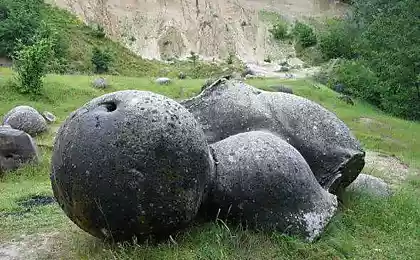527
The devil rocks Carl-Carl in Australia
The devil rocks, or Carl-Carl, as they are known to the local aboriginal people, Warumungu — a group of large granite boulders covering a small valley about 100 kilometres South of Tennant Creek in Northern Australia. This is one of the most widespread symbols of the Outback of Australia.

Formed by erosion over a million years ago, granite Devil's stones have a diameter of from 50 centimeters up to six meters. Some of the boulders miraculously balanced on each other, while others are distributed across the valley. And while it may seem that the boulders were specially someone posted, or brought by the floods from distant places, they are actually formed naturally by erosion of rocks.

Boulders began to form when molten lava leaked through cracks in the earth's crust and covered the top layer of soil. After some time, under the influence of tectonic processes, the granite began to crumble, rascalities on large, square blocks. Here are already connected to water and wind, gradually rounding out the edges and turning them into smooth boulders that we see today.

The extreme difference in temperature day and night in the arid desert region with enormous pressure on the rocks causing them to repeatedly expand and contract. Some of the stones eventually split into two halves.
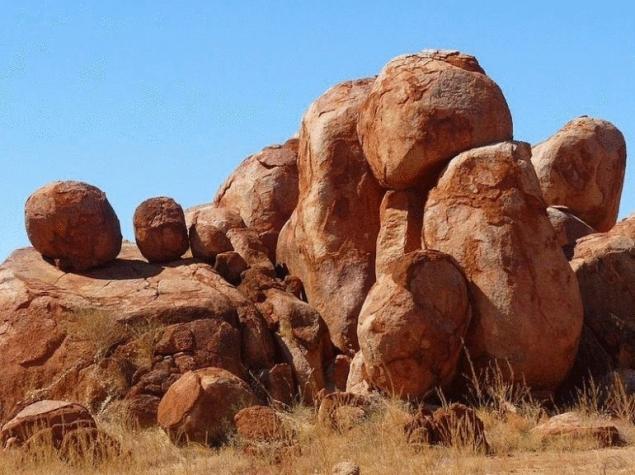
Carl-Carl play a very important role for indigenous people and protected under the law on Sacred places of the aborigines of the Northern territory. In aboriginal mythology, the Devil rocks — the eggs of the rainbow snake, which is associated with many stories and traditions.
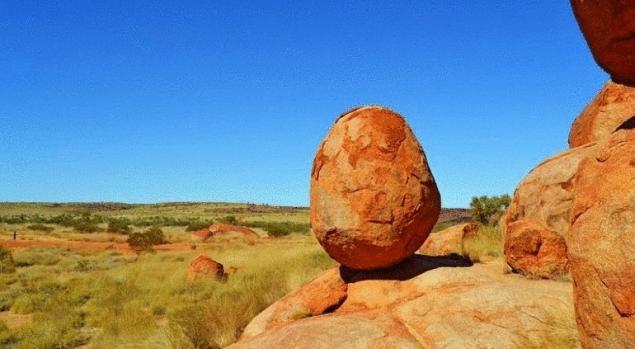


According to legend, one day, through this area passed the devil, who scattered these huge red boulders throughout the valley — hence the name. The locals still believe that the devil lives in the valley Karl-Karl and magically manages your stones.
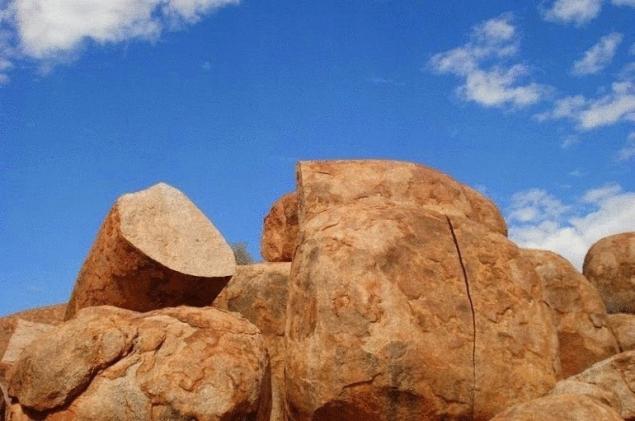
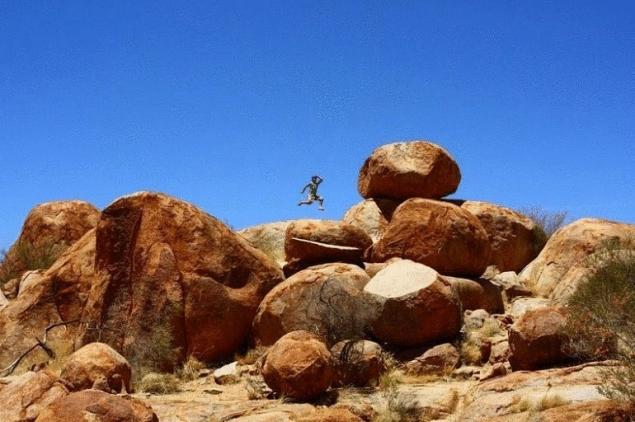

Source: lifeglobe.net/

Formed by erosion over a million years ago, granite Devil's stones have a diameter of from 50 centimeters up to six meters. Some of the boulders miraculously balanced on each other, while others are distributed across the valley. And while it may seem that the boulders were specially someone posted, or brought by the floods from distant places, they are actually formed naturally by erosion of rocks.

Boulders began to form when molten lava leaked through cracks in the earth's crust and covered the top layer of soil. After some time, under the influence of tectonic processes, the granite began to crumble, rascalities on large, square blocks. Here are already connected to water and wind, gradually rounding out the edges and turning them into smooth boulders that we see today.

The extreme difference in temperature day and night in the arid desert region with enormous pressure on the rocks causing them to repeatedly expand and contract. Some of the stones eventually split into two halves.

Carl-Carl play a very important role for indigenous people and protected under the law on Sacred places of the aborigines of the Northern territory. In aboriginal mythology, the Devil rocks — the eggs of the rainbow snake, which is associated with many stories and traditions.



According to legend, one day, through this area passed the devil, who scattered these huge red boulders throughout the valley — hence the name. The locals still believe that the devil lives in the valley Karl-Karl and magically manages your stones.



Source: lifeglobe.net/























